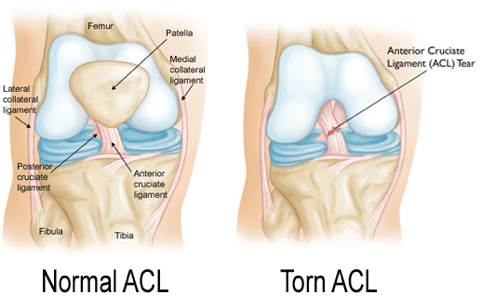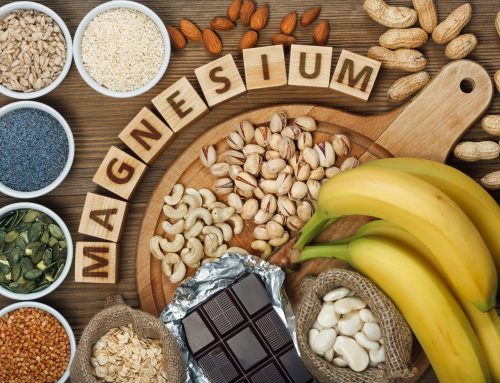The anterior cruciate ligament or ACL is a common injury in the knee. The ACL provides stability to the knee and stops the anterior translation of the femur on the tibia. As conservative measures in numbers there is approximately 38,000 injuries to the ACL in Australia per year.
The most recent literature states that arthroscopes and knee reconstructions are not as successful as one is led to believe, that re-rupture of the ACL in a 12-month period post-surgery is very common and the long-term effects to the athlete includes a significantly higher risk of osteoarthritis in the future. Hence, one needs to make their joints bullet proof.
When it comes to maturing females, they are four to six times more likely to sustain an ACL injury compared to males in the athletic population. This is due to the rapid growth of the femur and tibia that generate larger joint forces making neuromuscular control of the lower extremities and trunk much harder. A lack of core stability has shown to have a greater uncontrolled trunk displacement leading to higher knee ligament strains and ACL injury.
One of the most common muscular imbalances from females to males is the increased knee valgus (Q-angle) that occurs in the female population which leads to femoral/tibial torsion. Both the torsion and valgus have been shown as an excellent predictor for future injury. This common finding has been associated with increased quadriceps firing and decreased gluteal firing causing the anterior shear stress on the tibia which is directly corresponded to increased stress on the ACL.
EXERCISES FOR GLUTE ACTIVATION
Exercises that target proper Gluteus Maximus activation have been shown to yield the greatest effect. Exercises are as follows:
• Supine hip bridges with a resistance band – This is where you lay on your back with your knees bent and have a resistance band around the outside of your thighs just above the knees. You push out gently on the band whilst you lift your pelvis off the floor and then slowly lower it back down. Aiming to perform 3 sets of 10 repetitions. This helps engage the glute and external rotators of the hip to begin to reduce the anterior pelvic tilt that is too often seen in female athletes.
A valgus collapse of the knee can be associated with a weakness in the hip external rotators and gluteus maximus which has been an identifying finding that predisposes the athlete to an eight times greater risk of sustaining a second ACL injury. Clam shells work directly the external rotors of the hip.
• Clam shell with resistance band – Lay on your side with your knees bent to 90 degrees and stack on top of each other. Have the band around the thighs just above the knees. Whilst keep core switched on with abdominal hollowing and a flat back, lift the top leg outwards like opening your knees, whilst keeping the feet together. Make sure you don’t open too far where you lose control and stability in your back and you start to rotate your pelvis. Keep opening and closing the legs for 3 sets of 10 repetitions.
The hamstrings are known as synergists to the knee and provide stability to tibia against the anterior forces that are created by the quadriceps. There is also some fibres that come from the hamstring and are closely related to the ACL. Therefore, making string hamstrings is crucial to overcoming or preventing ACL injuries. Open chain exercises like the stability ball leg curl has shown to elicit high EMG activity of the hamstring muscles whilst co-contracting the core musculature at the same time.
• Leg Curl with feet on stability ball – Start by laying on your back with arms by your side and your feet on a stability ball. Activate your gluts and core muscles and lift your pelvis off the floor into an elevated bridge position. Whilst painting a high bridge position, draw the ball into your buttocks as close as possible, and then reverse the movement. All the time having a high bridge position and performing the exercise with slow controlled movements. Perform the exercise for 3 sets of 10 repetitions.
One of the big movements that can be problematic for recovering ACL injuries is lateral stability. And most sports have a side step movement that is needed. When there is an increased hip abduction strength, the athlete has a better control over their lower extremity. The side step monster exercise is great at targeting the gluteus medius and maximus.
• Lateral steps whilst in a 1/4 squat – Start with the band around the thighs, just above the knees and feet shoulder width apart. Standing in this position should create tension on the band. Perform a 1/4 squat that involves slightly bending in hips and knees. Whilst in this position, shift weight onto one leg and take a lateral step with the other leg and then return the leg back to the 1/4 squat position. Perform 3 sets of 10 repetitions on each leg.
Another potential risk of injury occurs when an athlete jumps and lands with knees flexed less than 45 degrees. This landing can cause translating forces at the knee and cause instability with the proprioception or balance receptors in the knee. If the athlete can land with toes ahead, no inward knee motion and absorb the forces of the jump they are starting to enhance the stability from the knee
• Long Jump to backward hop – Begin this exercise in a quarter squat position and jump forward in a long explosive movement. Try and ‘stick’ the landing and hold the position for 5 seconds. Try and be light in the landing and have your knees flexed to 90 degrees with no inward motion of the knee. Then perform 3 backwards hops to the original position. Perform 3 sets of 10 repetitions. Remember your body will only jump as high or as long as the body is able to control the landing. The landing is crucial.
Another factor to help reduce ACL injuries and been shown to be beneficial is plyometric exercises. If performed well and controlled, this type of exercises can give the athlete explosiveness and better control in the athletic setting.
• Split Jumps – Begin in a split stance, one foot forward and one back like a lunge. Have arms reaching out in front of you. Jump upwards and as you do switch legs and raise arms above your head. Try and land softly with slight bend in the knees and bring arms back to the original position of in front of you at shoulder height. Continue jumps by alternating leg position. Try and perform 3 sets of 10 repetitions on each leg. If fatigue sets in and you are unable to do any of the exercises with perfect form, stop and recover.
When one is thinking about training and even rehabilitation of an injury, apart from the traditional strengthening and stretching exercises, one should consider three additional components when looking at a comprehensive training protocols. These are that they have biomechanically correct form in the chosen exercise; neuromuscular patterning based on underlying neuromuscular imbalances as found in their assessment tests; and lastly that they have verbal cueing both during and after training.
A core stabilization program is essential in order to provide dynamic stability for the lower extremities. Stuart McGill describes a weak core as a precursor to injury and results in having the weaker joints of the body trying to compensate to try and make up for this difference. All the above exercises are easy to incorporate into daily living and require minimal equipment. If they are performed with correct form and technique the risks are very low and the benefit is great.
[alert type=”success”]If you would like more information or would like to book an appointment at Neurohealth Chiropractic – please call the clinic on 9905 9099 or email us admin@neurohealthchiro.com.au or fill in the contact form from our website www.neuro- healthchiro.com.au[/alert]
[alert type=”general”]Sign up to receive Neurohealth’s Free monthly health newsletter on the right hand side of this page. Filled with great information and lots of easy health tips to keep you at optimal health![/alert]




